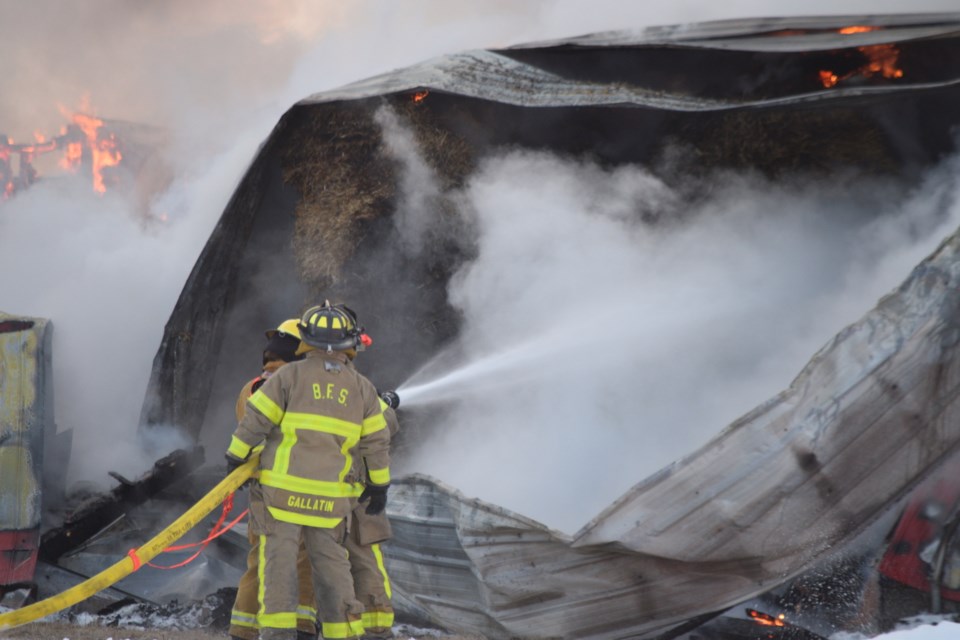BARRHEAD-It was a good test for Barrhead Regional Fire Services (BRFS) newest firefighting apparatus and one it passed with flying colours.
That is what BRFS chief Gary Hove said about Engine 37's performance during its first call out to an early evening Family Day blaze that destroyed a barn in Bloomsbury.
"It performed perfectly," he said. "It was nice to have its improved capabilities. The Engine carries one extra firefighter and it can hold more water which meant we didn't run out of water as often."
The extra firefighter allowed the fire department to deploy two handlines shortly after the engine arrived on the scene.
Engine 37 replaces Engine 3, which was retired after 22 years of service.
Although firefighters were quickly able to bring the fire under control, Hove said the barn itself was a write-off.
"It was an unprotected frame covered by tin, so when it caught fire, it consumed the building rather quickly," he said, noting the cause of the fire was accidental. "
Fortunately, no livestock or equipment was in the structure, Hove said, noting the barn was used to store hay bales.
He also credits his firefighters for the job they did in difficult circumstances.
When they first arrived on the scene, the temperature was -21 Celsius and a windchill brought it down to -29 Celsius.
"We do different things in cold weather. We trickle the water through the lines first so they don't freeze up in the hose or the nozzle," he said.
Freezing equipment is not the only difficulty when fighting a fire in subzero temperatures.
Although bunker gear is designed to protect firefighters from extreme temperatures, including cold, Hove said frigid temperatures do have an impact.
"The longer they stay outside and work and keep getting heated up through exertion and the fire and then cool off, the cold does get into them," he said. "The tools get icy and so does the ground because of all the water. It does make it more tiring."
In this case, fire crews had additional obstacles to overcome, one being the tin roof, which had to be removed so that they could better access the fire.
"Which takes a lot of time and manpower," Hove said, adding about 17 firefighters responded.
However, the biggest challenge for the fire crews were the hay bales.
Even with the help of the property owner who used an excavator to break them up, the fire department decided not to extinguish them completely or they would have been on the scene to the wee hours of the morning. As it was, they did not leave the scene until 9 p.m. and by the time they finished cleaning up, it was past 11 p.m.
"We made sure they were no longer a threat and put them into small little piles. It did not make sense to stay there for another four hours," he said.
Barry Kerton, TownandCountryToday.com



